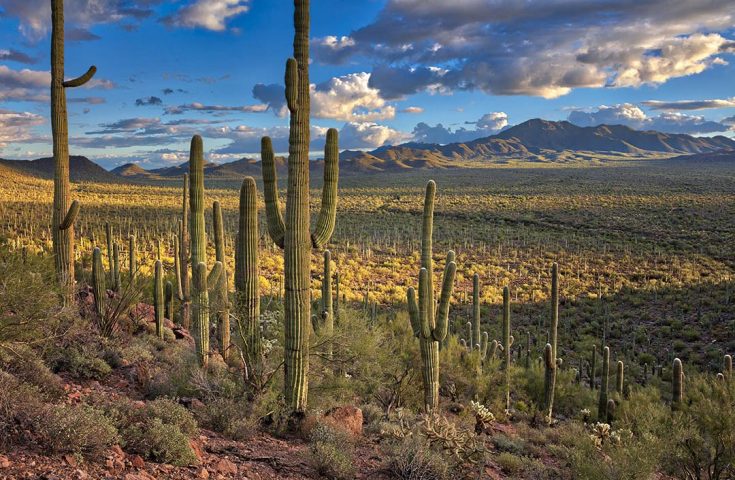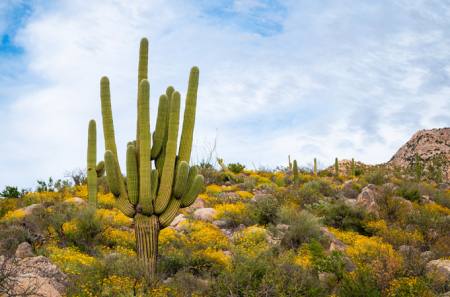Appreciate AZ #3
Trash Your Trash
You might be surprised to know that Arizona has six distinct ecosystems—each with varying climates, wildlife and plants. Preservation of these diverse worlds goes beyond appreciation. It’s essential for every one of us who sets foot in Arizona’s forests or deserts to protect these delicate ecosystems. Even small actions of neglect, such as leaving banana peels on the ground, can be detrimental to the health of local vegetation and animal habitats.
Trash Your Trash
Leave No Trace Tips Everyone can Practice
When it comes to protecting Arizona’s lands, small actions can yield big results. Even something as simple as picking up a granola bar wrapper discarded by someone else on the trail goes a long way to helping our conservation efforts.
- Leave nothing behind. Otherwise known as “Pack it in. Pack it out.” Whatever you bring with you into the outdoors needs to be taken back with you. This includes leftover food, pet waste and all trash.
- Don’t litter. This might seem obvious, but even biodegradable trash, such as orange peels, apple cores and seeds, is dangerous to the ecosystem. Burning waste doesn’t work well for garbage disposal either, as it releases harmful toxins. Make sure to dispose of trash at home or in a designated trash bin.
- Bring the necessities. Be ready for the unexpected and pack food, water, first aid, sun protection, extra clothing layers and a light source. Pack smartly and sparingly.
- Plan your meals. When preparing to go camping or backpacking, plan your meals ahead of time and repackage your food to minimize trash. When on your trip, remember to pack out all kitchen waste. Food scraps from dirty dishes can introduce harmful bacteria to the surrounding flora and fauna as well as attract wildlife.
- Dispose of waste appropriately. In most places without bathrooms, you should dig a small 4-6 inch deep hole in which to bury human waste. However, some places may require you to pack out solid waste. There are EPA-approved, commercial pack-out systems that are sanitary and easy to use. Check the regulations of your destination ahead of time.
- Wash yourself or belongings away from water sources. Carry water at least 200 feet away from streams, lakes or rivers before washing. This helps keep soap, sunscreen, bug spray and other chemicals out of the water source, protecting the fish, plants and animals that rely on it.
Arizona’s Six Ecosystems
- Chaparral. The chaparral ecosystem covers approximately 3.5 million acres of Arizona. Most of it stretches across central Arizona, sloping from the northwest to the southeast. Bushes and shrubs, such as desert scrub, thrive in this ecosystem and act as a transition between the desert and woodland regions.
- Desert. The desert is the largest ecosystem in Arizona, which has three deserts: Sonoran, Chihuahuan and Mojave. This ecosystem spreads across most of the southwestern and central parts of the state, and are where summers are the hottest.
- Forest. Arizona boasts six national forests: Apache-Sitgreaves, Coconino, Coronado, Kaibab, Prescott and Tonto. Most of these are located in the northern half of the state. Even though it’s a different ecosystem, national forests can include woodlands, too. In the forests, you’ll see Ponderosa pines and aspens.
- Grassland. Grasslands once covered a quarter of Arizona, but only about 30 percent of the state’s grassland ecosystem remains today. These can be found at every elevation—desert, woodland and mountain—but mostly, they blanket the southeastern corner of the state.
- Tundra. Arizona’s only tundra sits at Humphrey’s Peak, the top of the San Francisco Peaks in Flagstaff. In the tundra ecosystem, even the summers are cold, so only grasses, lichens and mosses grow.
- Woodland. This ecosystem is mostly located in the northern half of the state, skewing east. But some areas southeast of Tucson include woodlands. The woodlands and forests are similar, but they have different trees. In Arizona’s woodland areas, you’ll find Emory oak, sycamore and pinyon juniper.
Conserving Arizona’s Ecosystems
Several charitable organizations and government agencies help protect and preserve Arizona’s ecosystems. The U.S. Forest Service, Bureau of Land Management and National Park Service are responsible for managing and maintaining public lands, while nonprofit groups, such as The Nature Conservancy and Arizona Land and Water Trust, work to conserve natural resources, repurpose private lands and protect wilderness areas. The Nature Conservancy has helped protect more than 1.5 million acres in Arizona by both purchasing land for conservation and working with other entities to strengthen local ecosystems. Similarly, Arizona Land and Water Trust partners with private landowners to conserve natural resources, protecting more than 50,000 acres of land since 1987.
Created in partnership with © Leave No Trace Center for Outdoor Ethics.
Learn More
Appreciate AZ #4
Leave What You Find
Just a few reasons that we think Arizona is like no other place on Earth: the saguaro, a giant cactus only found in this region of the world and...
Outdoor Adventures
New to Nature? Leave No Trace in Arizona
If you're new to the outdoors—whether it's hiking a local trail, visiting a national park, or camping—following all the best practices can seem...






